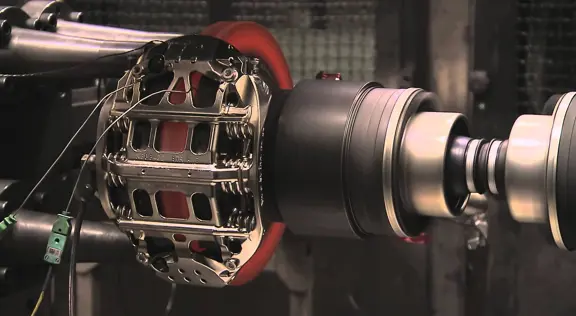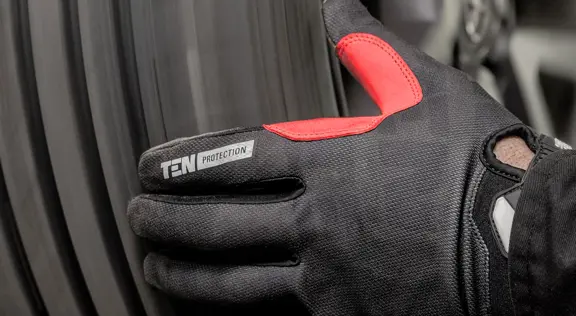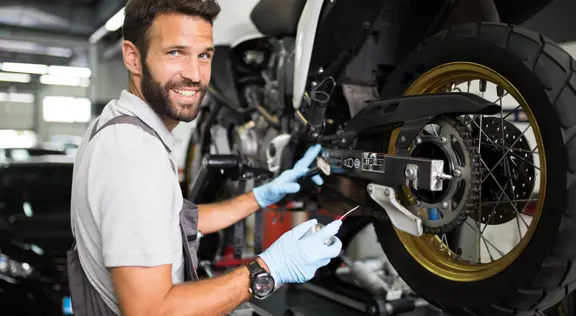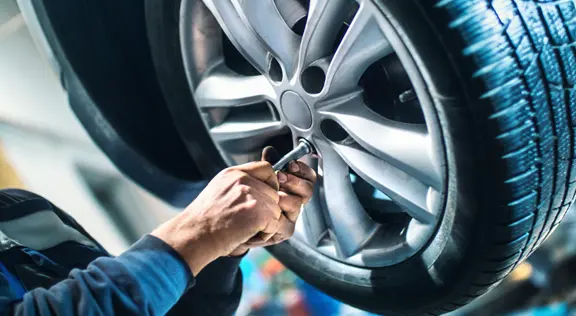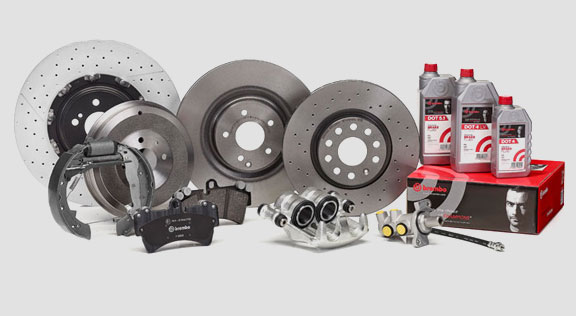
What causes brake discs to overheat and how to avoid it.
What is brake disc overheating?
Brake disc overheating occurs when the disc temperature exceeds the operating limits specified by the manufacturer. While braking, the kinetic energy of the vehicle is converted into heat through friction between the brake pads and the disc. High temperatures, which can impair braking system efficiency, are reached if the heat is not dissipated properly.
This condition can occur especially in extreme driving situations, such as steep downhill roads, continuous braking or intensive vehicle use on the track. Brakes must work in the optimal temperature range. They do not guarantee maximum grip if they are too cold and they can lose their effectiveness when they are too hot.
How can you recognise an overheated brake disc?
Recognising the signs of brake disc overheating early is crucial to avoid serious damage. Here are the main indicators:
- Altered visual appearance: an overheated disc may take on bluish, purple or dark grey tones, a sign of excessive heat treatment of the material. These colours indicate that the molecular structure of the metal has undergone an alteration that compromises its strength and durability.
- Vibrations during braking: overheating can cause deformation of the braking surface causing abnormal vibrations that can be felt on the brake pedal and steering wheel.
- Reduction in braking effectiveness (fading): excessively high temperatures can generate fading, i.e. the loss of braking effectiveness due to the overheating of the disc and pads. This occurs because the friction material temporarily loses its properties, reducing deceleration capacity.
- Burning smell: an acrid smell may indicate deterioration of the pads or disc caused by high temperatures. If perceived frequently, it is a clear sign that the braking system is working beyond its limits.
Main causes of brake disc overheating and its consequences
There are many causes of overheating which often stem from the improper use or excessive wear of components. For instance, worn pads and discs fail to dissipate heat properly, causing localised heat build-up that can lead to dangerous overheating. Intensive use of the braking system, such as frequent and prolonged braking downhill or during sporty driving, can also generate high temperatures that are difficult to dissipate.
Brake caliper locking is another risk factor. If the caliper remains partially closed, the disc undergoes continuous friction, resulting in a temperature increase that can damage the entire braking system. Furthermore, the use of poor quality materials compromises heat dissipation, accelerating overheating and reducing the service life of the component.
Overheating can have both short-term and long-term negative consequences and effects:
- Permanent disc deformation: uneven thermal expansion caused by excessive heat may be created, leading to permanent deformation of the braking band, which will cause vibrations, noise and irregular wear of disc and pads.
- Thermal crack formation: continuous thermal stress can lead to the appearance of cracks, increasing the risk of disc failure. The disc may fracture unexpectedly if the cracks propagate, compromising safe driving.
- Vapour lock: bubbles can be formed in the braking fluid at high temperatures, reducing the transmission of braking force, resulting in an idle pedal travel feeling and lengthening the braking distance. This mainly occurs in braking systems as they use hygroscopic liquids, which are prone to absorb moisture and lower their boiling point. Do you know the difference between vapour lock and fading?
Causes | Consequences |
|---|---|
Excessive component wear |
Permanent disc deformation
Thermal cracks
Vapour lock |
Intensive or incorrect use of the braking system | |
Brake caliper locking | |
Prevent with | |
Correct driving style, regular maintenance and use of high-performance components | |
How to prevent brake discs from overheating?
To prevent brakes from overheating, it is essential to adopt a correct driving style and guarantee regular vehicle maintenance. Avoiding abrupt and prolonged braking helps to reduce the load on the braking system, especially downhill, using the engine brake for more controlled deceleration. Maintaining the correct distance allows gradual braking, reducing thermal stress on the discs and improving driving safety. Another important aspect is to alternate braking with moments of pedal release to favour disc cooling and avoid heat build-up.
Regular checks are essential to guarantee braking system efficiency. Inspect the wear of pads and discs, change the brake fluid with high-performance products and check the correct operation of calipers help prevent overheating problems and improve car performance. Furthermore, choosing high-quality components, such as ventilated brake discs, high-performance pads and brake fluids with a high boiling point, helps to keep the system efficient and reduce the risk of malfunctions.
Following these steps will improve driving safety, optimise the performance of the braking system and prolong its service life.

Is there anything else you want to ask?

